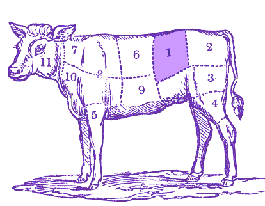The Top 2 Secrets for Writing a Book in 30 Days
by Victoria Lynn Schmidt
[Note: National Novel Writing Month is only a few weeks away, and almost 20,000 participants have already signed up. If you're going to take the challenge, here's a great article with two tactics you can use in order to have a successful NaNoWriMo experience. Good luck! --MP]
Is it really feasible to write a book in 30 days? In a word "Yes," but there are some secrets you need to know beforehand to be successful. In my book, Book in a Month: The fool-proof system for writing a book in 30 days (Writers Digest Books, 2008), I discuss all the secrets in detail. Here, I share the top 2 secrets to get you started.
Secret #1: Working "As If"
Working "as if" means that you keep writing, you keep moving forward with your story, and as new ideas or changes come to mind, you jot them down on your notes sheet (in an organized way of course!) and keep writing "as if" you've made those changes already. Because ...
You cannot write and rewrite at the same time if you want to finish a book in 30 days!
Character example
Let us say for some reason you want to change the name of your character from Anne to Barbara and you want her to be a pianist instead of a waitress. Instead of going back and changing every page that contains a reference to Anne or her occupation, you just jot down on the notes sheet:
"Change Anne to Barbara and make sure she's a pianist in all of her scenes, check pages x — xxx."
Then you use the name Barbara from this point forward and write as if she is a pianist.
You can also do this for character background changes. If you would like to change the childhood issues for one character so you can make her "gritty and jaded" when she goes home for Christmas, just jot it down on your note sheet and write her as if she were gritty and jaded from this point on. This type of change may also affect other characters, like her parents, so make sure you make any necessary notes on them as well.
Plot example
You are absorbed in your writing and all of a sudden realize you should have included a fight scene between Chris and Mike two chapters ago. It is the only way this current scene you are writing will make sense. No problem. Jot down on your notes sheet:
"Fight scene between Chris and Mike in chapter x. The outcome is xxxx because xxxxx. The point is xxxxx. See page x."
You can also get out your red pen and write on the page you wish to include this scene:
"Insert fight scene here — see notes sheet."
Subplot/Situation example
You suddenly get an idea for a great subplot. Or, when you have dull moments in the plot because you need to convey information (or you are facing the pains of the second act!), select one of the dramatic situations found in my book Story Structure Architect: A writer's guide to building dramatic situations and compelling characters (Writers Digest Books, 2005) and create a placeholder for it as a subplot to liven things up. Either way, jot it down on your notes sheet so you can add any preliminary pieces needed to set up the subplot in the previous chapters, then go ahead and write it.
Why is this Note Sheet so Valuable?
Now all these changes you came up with while writing are no longer taking up valuable space in your brain and you are free to keep moving forward, free to generate more ideas, free to keep getting those pages done.
Secret # 2: Subplots — Leave 'em?
You may also want to avoid working on the subplots all together. Many writers churn out a quick version of their story with subplots to be added later. It all depends on your writing style and level of mastery. Most of us do better if we can just focus on the main characters and plotline, and race through to the end. There is nothing wrong with that.
As you write, you can type in big letters:
"Subplot — Cari meets with hero about surprise party plans. Alex doesn't know."
And then continue on with the main plot. This way you know where you want the subplots to fit in and how they will progress but you don't waste a lot of time and brainpower working on them just yet. Because...
Subplots are always the first thing to go or change during the rewrite!
Once you get to "The End" you will be able to see:
• Where the story is a little slow
• Where things don't make sense
• What new information needs to be added
• How many characters need to be changed or dropped
Can you see that working too much on subplots can be a waste of time? Even if you keep all the subplots you create during these 30 days they will, nonetheless, change; the main plot will require them to change because it itself will change and grow as you write: new settings, characters, information, transitions, purpose, goals, subtext. The subplots will have to reflect these changes.
I hope you find these secrets helpful. Writing a book in a month is all about getting that first draft down on paper. You cannot expect to churn out something that is all ready to go to print in 30 days, but you will have your book completed, and that is what it is all about.
Copyright 2008 by Victoria Lynn Schmidt. All rights reserved in all media.
Victoria Lynn Schmidt is the author of 45 Master Characters (Writer's Digest, 2007) Book in a Month: The fool-proof system for writing a book in 30 days (Writers Digest Books, 2008) and Story Structure Architect: A writer's guide to building dramatic situations and compelling characters (Writers Digest Books, 2005). Victoria also teachers writers how to hone their craft and become published writers. She can be reached at Info@CharactersJourney.com.
[Note: National Novel Writing Month is only a few weeks away, and almost 20,000 participants have already signed up. If you're going to take the challenge, here's a great article with two tactics you can use in order to have a successful NaNoWriMo experience. Good luck! --MP]
Is it really feasible to write a book in 30 days? In a word "Yes," but there are some secrets you need to know beforehand to be successful. In my book, Book in a Month: The fool-proof system for writing a book in 30 days (Writers Digest Books, 2008), I discuss all the secrets in detail. Here, I share the top 2 secrets to get you started.
Secret #1: Working "As If"
Working "as if" means that you keep writing, you keep moving forward with your story, and as new ideas or changes come to mind, you jot them down on your notes sheet (in an organized way of course!) and keep writing "as if" you've made those changes already. Because ...
You cannot write and rewrite at the same time if you want to finish a book in 30 days!
Character example
Let us say for some reason you want to change the name of your character from Anne to Barbara and you want her to be a pianist instead of a waitress. Instead of going back and changing every page that contains a reference to Anne or her occupation, you just jot down on the notes sheet:
"Change Anne to Barbara and make sure she's a pianist in all of her scenes, check pages x — xxx."
Then you use the name Barbara from this point forward and write as if she is a pianist.
You can also do this for character background changes. If you would like to change the childhood issues for one character so you can make her "gritty and jaded" when she goes home for Christmas, just jot it down on your note sheet and write her as if she were gritty and jaded from this point on. This type of change may also affect other characters, like her parents, so make sure you make any necessary notes on them as well.
Plot example
You are absorbed in your writing and all of a sudden realize you should have included a fight scene between Chris and Mike two chapters ago. It is the only way this current scene you are writing will make sense. No problem. Jot down on your notes sheet:
"Fight scene between Chris and Mike in chapter x. The outcome is xxxx because xxxxx. The point is xxxxx. See page x."
You can also get out your red pen and write on the page you wish to include this scene:
"Insert fight scene here — see notes sheet."
Subplot/Situation example
You suddenly get an idea for a great subplot. Or, when you have dull moments in the plot because you need to convey information (or you are facing the pains of the second act!), select one of the dramatic situations found in my book Story Structure Architect: A writer's guide to building dramatic situations and compelling characters (Writers Digest Books, 2005) and create a placeholder for it as a subplot to liven things up. Either way, jot it down on your notes sheet so you can add any preliminary pieces needed to set up the subplot in the previous chapters, then go ahead and write it.
Why is this Note Sheet so Valuable?
Now all these changes you came up with while writing are no longer taking up valuable space in your brain and you are free to keep moving forward, free to generate more ideas, free to keep getting those pages done.
Secret # 2: Subplots — Leave 'em?
You may also want to avoid working on the subplots all together. Many writers churn out a quick version of their story with subplots to be added later. It all depends on your writing style and level of mastery. Most of us do better if we can just focus on the main characters and plotline, and race through to the end. There is nothing wrong with that.
As you write, you can type in big letters:
"Subplot — Cari meets with hero about surprise party plans. Alex doesn't know."
And then continue on with the main plot. This way you know where you want the subplots to fit in and how they will progress but you don't waste a lot of time and brainpower working on them just yet. Because...
Subplots are always the first thing to go or change during the rewrite!
Once you get to "The End" you will be able to see:
• Where the story is a little slow
• Where things don't make sense
• What new information needs to be added
• How many characters need to be changed or dropped
Can you see that working too much on subplots can be a waste of time? Even if you keep all the subplots you create during these 30 days they will, nonetheless, change; the main plot will require them to change because it itself will change and grow as you write: new settings, characters, information, transitions, purpose, goals, subtext. The subplots will have to reflect these changes.
I hope you find these secrets helpful. Writing a book in a month is all about getting that first draft down on paper. You cannot expect to churn out something that is all ready to go to print in 30 days, but you will have your book completed, and that is what it is all about.
Copyright 2008 by Victoria Lynn Schmidt. All rights reserved in all media.
Victoria Lynn Schmidt is the author of 45 Master Characters (Writer's Digest, 2007) Book in a Month: The fool-proof system for writing a book in 30 days (Writers Digest Books, 2008) and Story Structure Architect: A writer's guide to building dramatic situations and compelling characters (Writers Digest Books, 2005). Victoria also teachers writers how to hone their craft and become published writers. She can be reached at Info@CharactersJourney.com.
Labels: NaNoWriMo, novel writing tips, plot, Victoria Lynn Schmidt, writing tips













